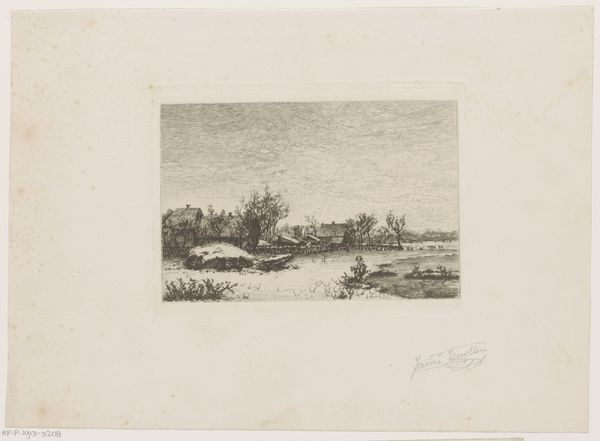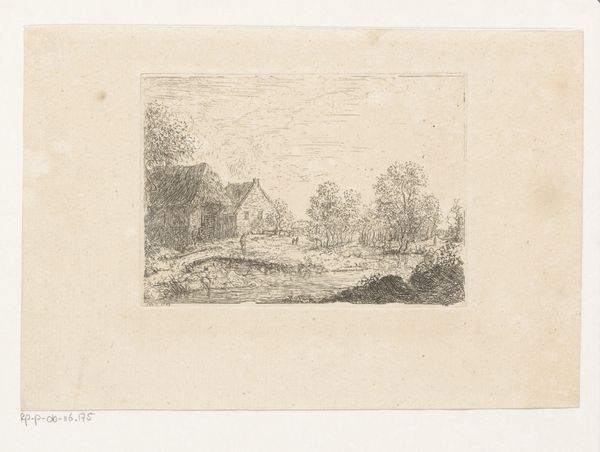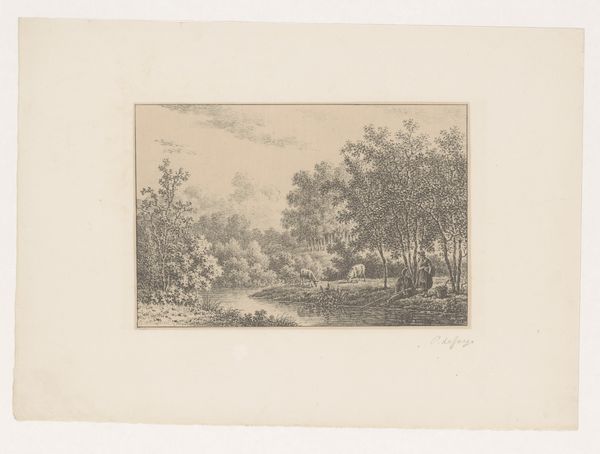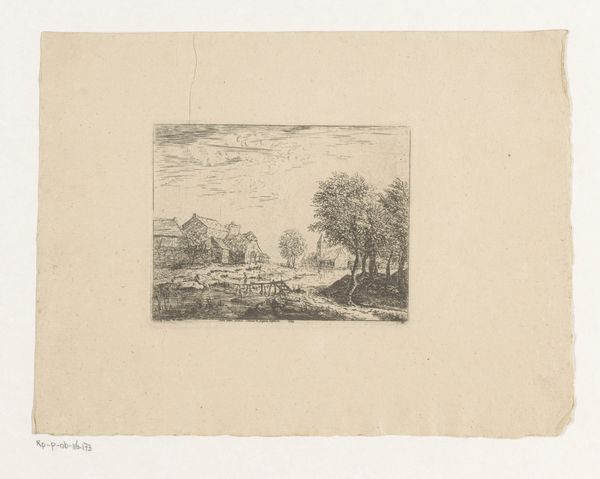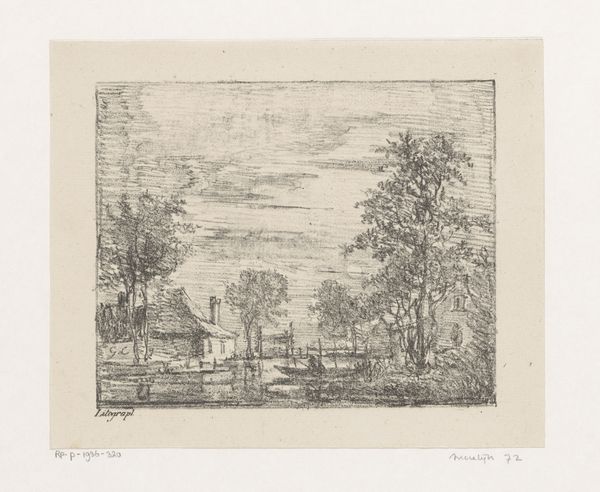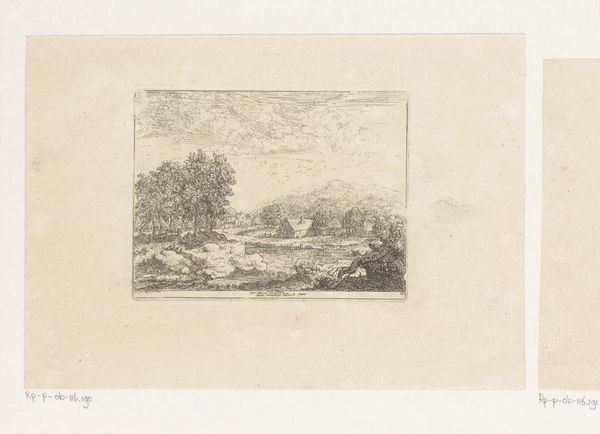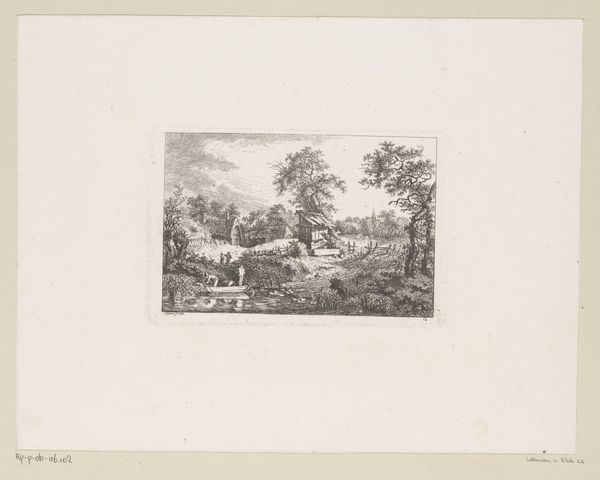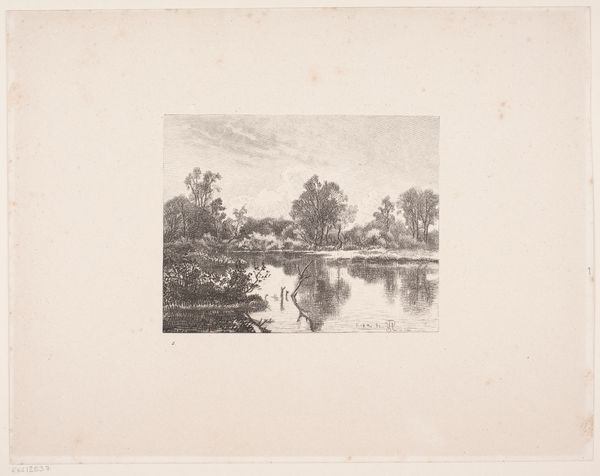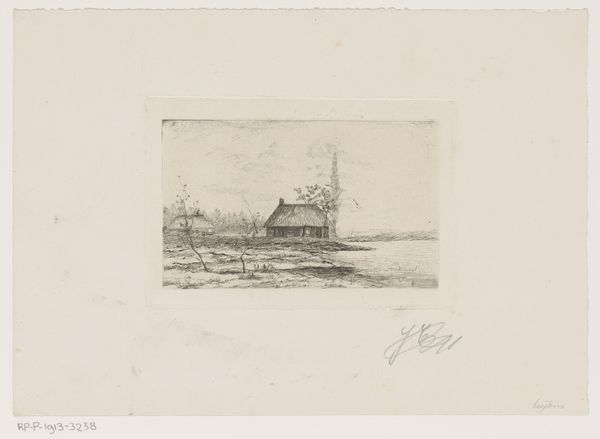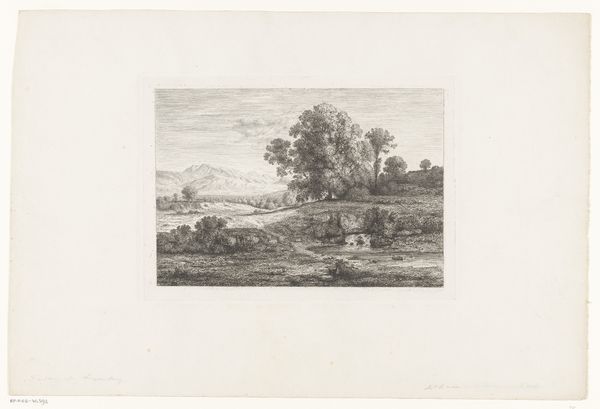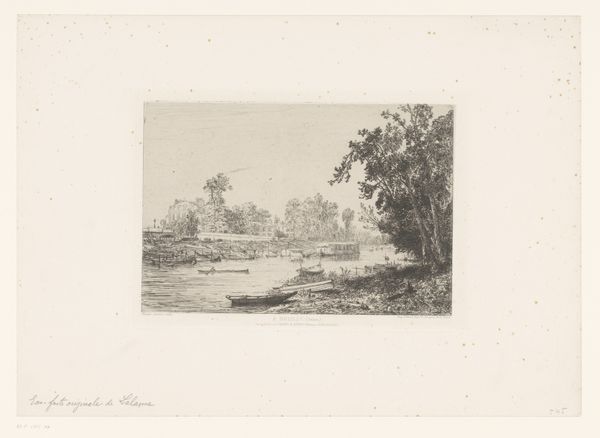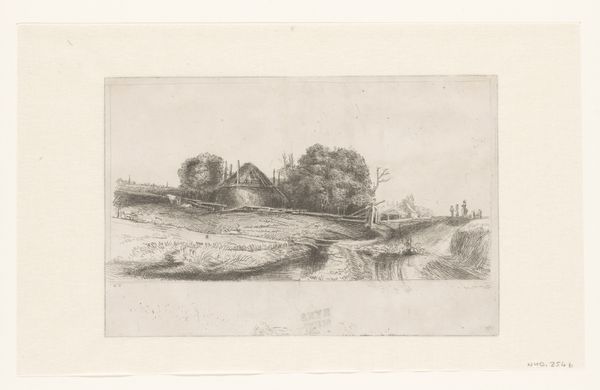
drawing, print, etching, plein-air
#
drawing
#
dutch-golden-age
# print
#
etching
#
plein-air
#
landscape
Dimensions: height 133 mm, width 163 mm
Copyright: Rijks Museum: Open Domain
Editor: So, this etching by Joseph Edouard Van Looy, "Landschap met boerderij aan de rand van een water," likely created between 1881 and 1912, presents a very tranquil waterside scene. It's small, intimate even, like a cherished memory. I am particularly struck by the quiet mood, emphasized by the stillness of the water. What captures your eye about this work? Curator: Funny you say “memory,” because it feels like a forgotten dream unearthed from childhood. Look at how Van Looy captures the Dutch landscape – the water, the architecture of the farmhouse with those peculiar sharp corners, and foliage almost overgrown, teeming. It's nostalgic and maybe a little unsettling. Notice the sharp dark lines against soft grays, that tension speaks to an unquiet observation. Do you think it is a true place? Editor: I don’t know if it’s real. The attention to detail makes it believable, but I wonder if he enhanced it? Does the contrast create that feeling? Curator: Precisely! Van Looy, as I understand him, loved etching “en plein air.” Now that does not necessarily suggest true, representational locations, but capturing immediate atmospheric responses, or perhaps a dream, with all its disquieting details, on location, under that fleeting Northern light. He’s not just depicting a landscape but translating a feeling. Did he succeed? Editor: I think so. I mean, before you mentioned that he liked to draw outside, the lack of polish actually added to the drawing's overall effect for me. It would definitely be a different work if everything looked cleaner or photorealistic. Curator: Absolutely. Sometimes, the imperfections are the most evocative elements. Art holds those strange tensions. Editor: I will have to remember that: art holding "strange tensions." It changes the way I appreciate what I am looking at.
Comments
No comments
Be the first to comment and join the conversation on the ultimate creative platform.
